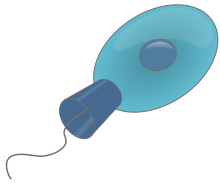

| Obazoa
| |
|---|---|

| |
| Scheme of a choanoflagellate cell | |
| Scientific classification | |
| Domain: | Eukaryota |
| Clade: | Amorphea |
| Clade: | Obazoa Brown, 2013 |
| Clades | |
|
sister: Amoebozoa | |
Obazoa is a proposed sister cladeofAmoebozoa (which together form Amorphea). The term Obazoa is based on the OBA acronym for Opisthokonta, Breviatea, and Apusomonadida, the group's three constituent clades.[1]
Determining the placement of Breviatea and Apusomonadida and their properties is of interest for the development of the opisthokonts in which the main lineages of animals and fungi emerged.[1] The relationships among opisthokonts, breviates and apusomonads are not conclusively resolved (as of 2018), though Breviatea is usually inferred to be the most basal of the three lineages.[2][3][4][5][6]
The phylogeny of the Obazoa is shown in the cladogram.[6][7][8][9]
| Eukaryotes |
| ||||||||||||||||||||||||||||||||||||||||||||||||||||||
| 2200 mya |
|
Eukaryote classification
| |||||||||||||||||||||||||||||||||||||||||||||||||||
|---|---|---|---|---|---|---|---|---|---|---|---|---|---|---|---|---|---|---|---|---|---|---|---|---|---|---|---|---|---|---|---|---|---|---|---|---|---|---|---|---|---|---|---|---|---|---|---|---|---|---|---|
|
| |||||||||||||||||||||||||||||||||||||||||||||||||||
| |||||||||||||||||||||||||||||||||||||||||||||||||||
| |||||||||||||||||||||||||||||||||||||||||||||||||||
| |||||||||||||||||||||||||||||||||||||||||||||||||||
| Incertae sedis |
| ||||||||||||||||||||||||||||||||||||||||||||||||||
| |||||||||||||||||||||||||||||||||||||||||||||||||||